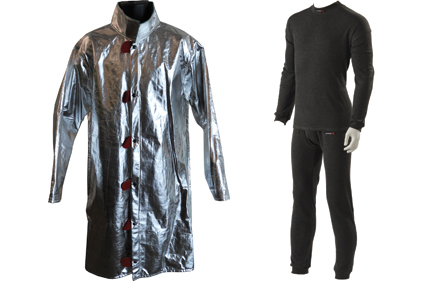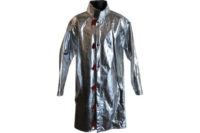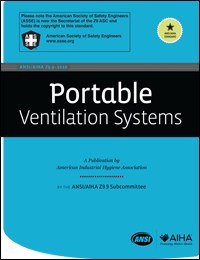Unfortunately, in many companies across the United States, this is just the ideal scenario and may not necessarily reflect the reality in the trenches. An online survey conducted by Kimberly-Clark Professional in July 20111 found that 89 percent of safety professionals polled had observed workers failing to wear PPE when they should have been. Twenty-nine percent said this had happened on numerous occasions.
Noncompliance with PPE standards has consistently been listed as a top concern for safety professionals since Kimberly-Clark started this benchmark research survey in 2006. In fact, 2011 marked the fifth year that the study revealed a PPE noncompliance rate of at least 85 percent. So it’s not surprising that 78 percent of the survey’s respondents said workplace accidents and injuries are the concerns most likely to keep them up at night.
Across the country, the importance of complying with PPE standards is repeated on safety calls, in safety meetings and in safety training. Many workers have even watched their co-workers get injured or worse. Yet workers continue to put themselves at risk for serious injury or even death by not following important safety procedures. Why?
In the 2011 Kimberly-Clark survey, the primary reasons for the alarming noncompliance figures were: workers’ beliefs that PPE was not needed; uncomfortable PPE; and protective apparel that is too hot, fits poorly or is unattractive.
PPE compliance protocols: A double-edged sword
Some workers believe that donning protective apparel as mandated impedes their ability to do their job and may put them at even greater risk when completing their routine dangerous work assignments. Their required uniform may make them too hot and sweaty and thus at significant risk to succumb to heat stress and possibly to even pass out. Or their work clothing may restrict their movement to the point that they are unable to perform their job correctly, increasing their likelihood of being injured or jeopardizing their employment if they should make a disastrous mistake. These workers think that if they alter or remove the offending clothing article, they will be able to perform their job at the best of their ability, which in turn lessens their “need” for PPE.
Another common instigator of PPE noncompliance is the “one-solution-fits-all-approach” to providing work apparel across an organization. Different hazardous environments require different, and often flexible, protective solutions. PPE required in one department may not be necessary in another where the need for protection is not as great.
But just because the danger isn’t obvious and imminent doesn’t mean the proper use of protective apparel is less important. Workers sometimes do not recognize or understand that, even when they may not be in impending danger of being hurt, some PPE protocols are designed to prevent problems linked to long-term exposure.
Size and cut are extremely important for a garment to fit comfortably. While it may be a simple concept, it is often difficult to ensure that protective apparel fits workers properly in a company needing a wide range of sizing options to fit both men’s and women’s body types.
No matter their best intentions, safety managers are likely to acknowledge that when selecting protective apparel for their workers, the decision is largely based on which options provide the highest level of protection without exceeding budget constraints — an especially important decision-driver in a recovering economy. While comfort or “wearability” is often not a deciding factor, in the current economic climate it is more important than ever to invest in protective apparel that workers will want to wear.
Enhancing comfort without compromising safety
OSHA guidelines for selecting PPE state: “Employers should take the fit and comfort of PPE into consideration when selecting appropriate items for their workplace. PPE that fits well and is comfortable to wear will encourage employee use of PPE.”2
Until recently, safety managers’ choices for comfortable protective apparel have been limited. Comfort-driven protective apparel has not historically offered enough protection to be seriously considered for use in hazardous environments.
But PPE fabric and clothing manufacturers have risen to the task of developing lighter-weight solutions that combine a high level of protection with maximum comfort. For example, one manufacturer introduced a line of baselayer products made of a lightweight (6.0 oz.), inherently flame-resistant knit fabric that is rated NFPA 70E Hazard Risk Category 2 while similar weight products typically fall into HRC 1.
PPE apparel manufacturers have also created lighter weight, flexible alternatives for clothing that is commonly perceived as being heavy and rigid. An example is a 12-oz. aluminized fleece fabric that was designed with comfort in mind yet is able to pass the ASTM F955 pour test for molten iron.
Lightweight protective apparel allows workers to wear multiple layers when undertaking hazardous tasks. Layering is an optimal and flexible solution to increase protection while maintaining comfort. With a layered clothing system, two plus two often equals five when it comes to thermal protection. Thanks to the additional insulation provided by the air trapped between layers, two lighter-weight or lower-rated garments can often provide the same or even better protection when worn together than a single, heavier primary protection layer. Also, with a layered approach, employees can wear heavier, higher-rated outer gear in extreme-risk situations, and then remove this clothing when the threat of injury is not as great and still be protected by a lighter-weight protective base layer.
In addition to weight, other properties that safety managers want to look for in a garment to enhance comfort include: breathability (allows heat and sweat vapors to escape), wicking (moves moisture away from the skin), fast drying (helps regulate body temperature), antimicrobial properties (inhibit the growth of bacterial odors), and comfortable fiber blends designed to reduce rubbing and minimize skin abrasion.
When workers are comfortable in their protective apparel, they will be more likely to wear it without modification. And when workers are in compliance, safety managers sleep better at night.
References
1 Survey conducted with 119 people over the Internet from June 10, 2011, through July 11, 2011. All survey respondents were responsible for purchasing, selecting or influencing the purchase or selection of PPE. Previous year surveys were conducted at the National Safety Council (NSC) Congress & Expo and ASSE Safety 2010. The survey was not conducted in 2009.
2 Occupational Safety and Health Administration (OSHA), Personal Protective Equipment, OSHA 3151-12R 2003.




